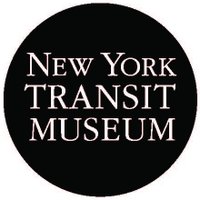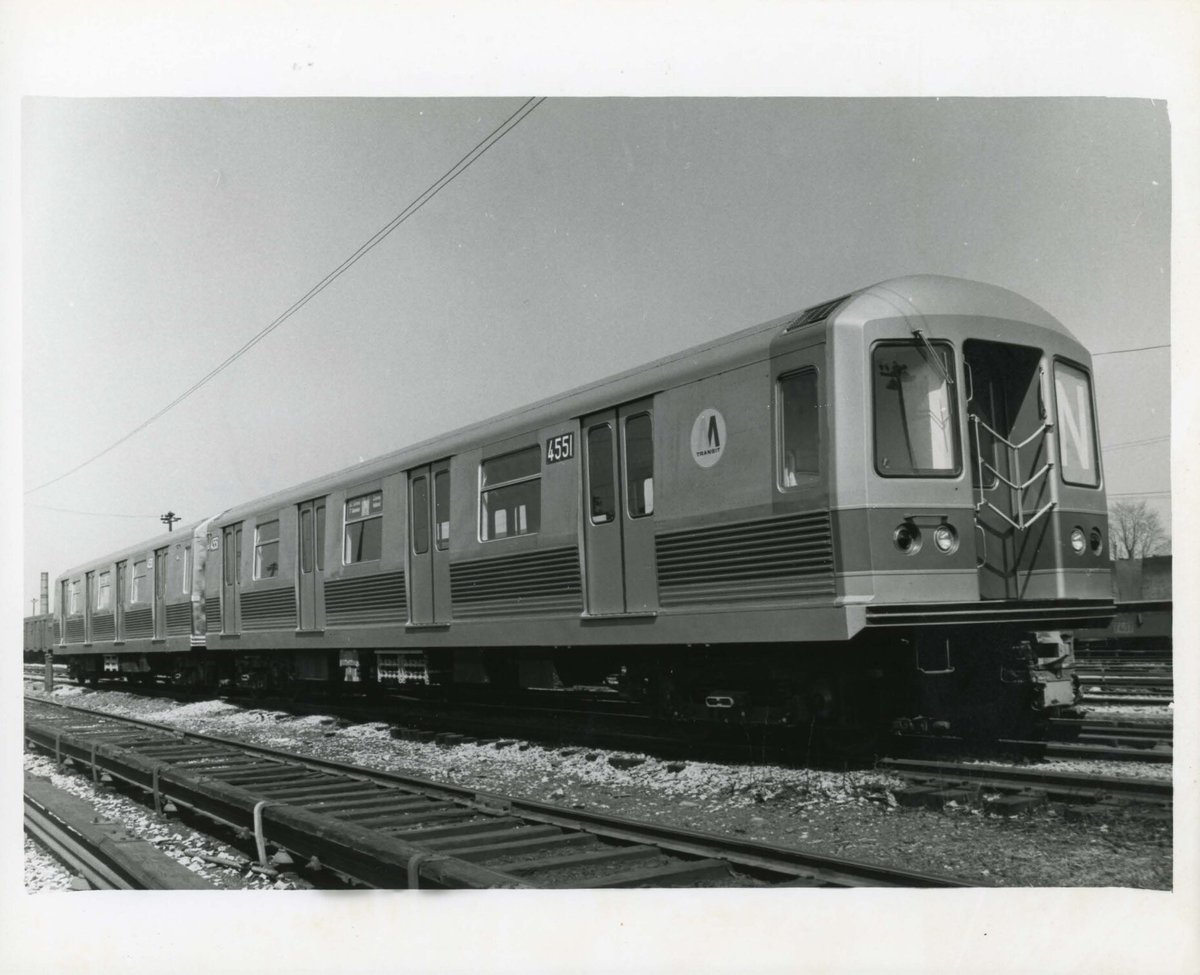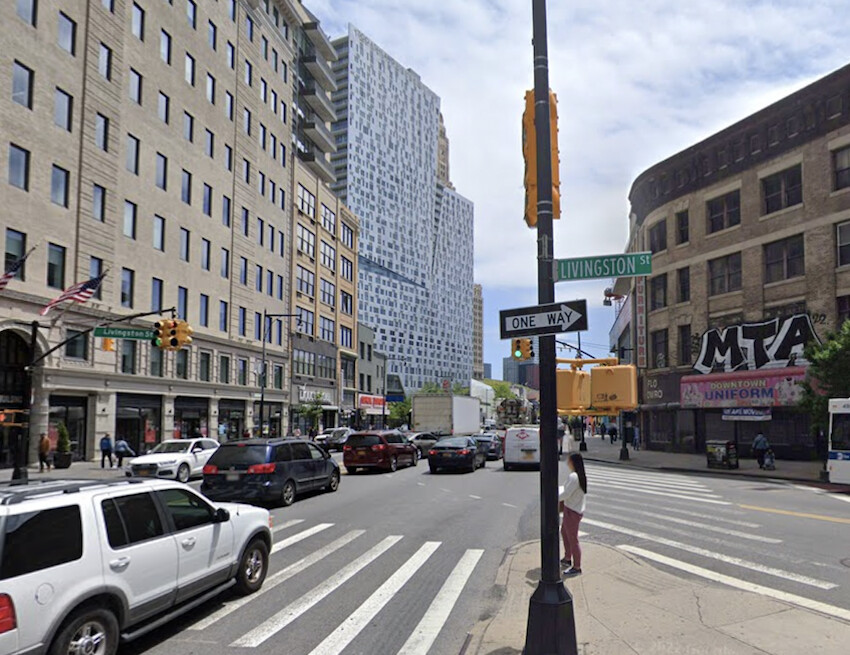
NY Transit Museum
@NYTransitMuseum
New York Transit Museum is a unique museum devoted to the impact of public transportation on the growth and development of the New York metropolitan region.
ID:103965911
https://linktr.ee/nytransitmuseum 11-01-2010 20:51:09
14,6K Tweets
26,9K Followers
1,1K Following

#DidYouKnow there used to be a shuttle between the 9th Avenue and Ditmas Avenue stations in #Brooklyn ? From 1954 to 1975, the Culver Shuttle (SS route indicator) connected the Culver Line with the West End Line, as seen here in this #NYTMCollection map detail. Do you remember it?


#TodayinHistory : #OnThisDay in 1919, Avenue U and Avenue X opened on the BMT Culver line. These #NYTMCollection photos depict McDonald Avenue in Gravesend, Brooklyn during construction of the stations between 1915 and 1917. What's your favorite station on the BMT Culver line?


#TodayinHistory : #OnThisDay in 1969, the first two R-42 subway cars entered service on the BMT Broadway line (today’s N train) in a mixed consist train with eight modified R-40As. What's your favorite feature of the R-42?


#AAPIHeritageMonth : This 1975 #NYTMCollection photo shows the BMT Broadway Line platform at Canal St after new bilingual signage was put in. The Chinese characters read “Chinatown.' We are not aware of any other case of installed bilingual signage in the #NYCsubway .


#TodayinHistory : #OnThisDay in 1928, Henry Ford visited Brooklyn and arranged to take a Brooklyn City Railroad Company horsecar back to #Michigan for display in his American Village Museum. #NYTMCollection #HenryFord


#ThenAndNow : This #NYTMCollection photo shows the Gun Hill Road station in the #Bronx in 1912, the year it opened, as part of the New York, Westchester and Boston Railway. It became an #NYC subway stop in 1940 after the Railway was bought by the #NYC Board of Transportation.


Have you explored the #NYTransitMuseum ’s BRT Brooklyn Union Elevated Car Number 1407? Come see for yourself! The New York Transit Museum in Downtown Brooklyn is currently open Thursday – Sunday, 10am to 4pm. Learn more at nytransitmuseum.org/visit.
Photo by @ara_y00.


Designed by architect Squire J. Vickers, the IND Subway, which opened in 1932, separates stations into groups with distinct tile colors and patterns. These #NYTMCollection schematics from the 1930s show some of the detailed design choices for IND station interiors.


At 13 feet in diameter, the famous clock at Grand Central Terminal is the world’s largest Tiffany Glass clockface. This #NYTMcollection photo taken by Frank English in 2010 shows a view of the clock from inside!


In 1967, this photo of WyNona Blackman graced #NYCSubway cars as part of the long-running “Miss Subways” campaign, which ran from 1941 to 1976. According to #JetMagazine , WyNona also competed in the #MissNewYork State pageant as Miss #CrownHeights . Do you remember Miss Subways?


The #NYTransitMuseum will present many new public programs in May. Learn more and register at nytransitmuseum.org/programs.


#ThenAndNow : Downtown Brooklyn has changed quite a bit since this photo was taken in the 1940s. Seen here is the intersection of Flatbush Avenue and Livingston Street. Directly ahead is a view of a trolley on the Putnam Avenue trolley line. What other differences do you see?


Today is National #OrangeJuice Day! To celebrate this popular breakfast staple, we’re sharing two #vintage advertisements on display at the #NYTransitMuseum . Did you drink orange juice this morning?


#TransitTrivia : #DidYouKnow the #NYTMcollection doesn’t only contain objects and photographs pertaining to transit in New York? This photo by Harold I. Wright from 1971 was taken in a different country! Can you tell which overseas city this is?


This #NYTMCollection photo from 1902 shows vault lighting being installed in City Hall Park to illuminate the forthcoming City Hall station below (now Old City Hall Station), which opened in 1904. Natural light provided by vault lighting helped make riders feel more comfortable.


Taken #OnThisDay in 1910 by subway construction photographer Granville W. Pullis, these #NYTMCollection photos show the horse shoer, carriage maker, and wooden houses that once occupied 4th Avenue.


#DidYouKnow that 4th Avenue in Brooklyn has been the destination for vehicle repair for more than a century? Known as a paradise for auto body repairs and parts today, at the turn of the last century it was the place to go to tend to your horse and carriage!


May is #AAPIHeritageMonth . This 1996 #NYTMCollection poster raised awareness of AAPI Heritage Month when it was seen in the #NYCsubway . It features a seal carving by artist Fung Ming Chip and a poem from the Tao Te Ching, attributed to philosopher Lao Tzu.


Today, we are doing a collaboration with
Brooklyn Conservatory Of Music to bring to life a very special object in our archives: the original sheet music to “Take the ‘A’ Train.” We are thrilled that the talented students and faculty of the Brooklyn Conservatory's Jazz Program agreed to perform…

